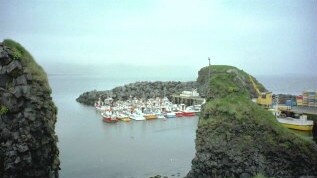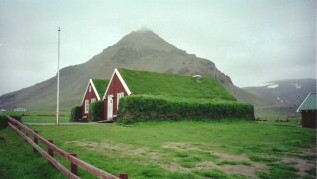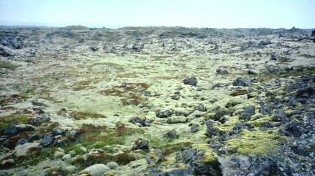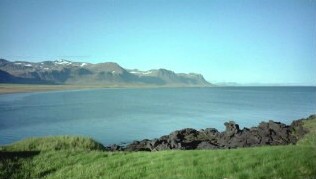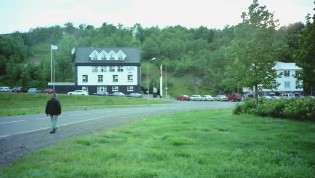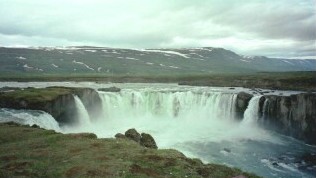|
|
||||||||||||||||||
 |
||
|
|
||
|
Part Two: Budir to Myvatn via Akureyri
Iceland lies in the same time zone as the UK but sticks to GMT all year round. With 24 hour daylight it makes little difference what the time is in June and landscape photography was possible throughout both day and night. We were still on the more populated western side of the island but few houses and vehicles were to be seen. Buildings materials varied and some houses had grass roofs, as sometimes found in the far north of Scandinavia.
On some of the volcanic rock were areas of the reindeer moss used in flower arranging, with Iceland regarded the main supply source of this material.
The next leg of the drive was from Budir through farming country to Akureyri, regarded as the capital of the north with 15000 inhabitants, situated near the coast at about twelve on our imaginary clock. The roads are still generally good although we are beginning to find gravel stretches. The speed limit on these is about 50 miles per hour compared to 60 on made-up roads.
Names of Icelandic people are a curiosity. Mostly they only truly have a first name, a child's last name being constructed from the father's first name with son or dottir added as appropriate. Less commonly the motherís name is used in place of the fatherís. In the telephone directory entries are listed in first name order.
Our stay at Akureyri, in the white building above with four roof windows, was for one night only, moving on the next day to Lake Myvatn situated at around one o'clock. On the way we lingered awhile at Godafoss, the Waterfall of the Gods.
"Vatn" means lake in Icelandic and "my" means midge. As we approached the lake for the first time we saw what appeared to be tornado-like black columns which turned out to be millions of midges, so it is certainly well named. Although they do not bite, these insects were a major nuisance and most of the people walking or cycling close to the lake wore mosquito netting totally enclosing their heads. Emergences it seems are usually in June and August and we must have coincided with one. They are a treat for the fish and water birds however and they no doubt are delighted by their appearance. |
|
Click below for Part Three |
|||||||||
|
to Iceland Clockwise |
|||||||||
|
Magic and Logic ................... End of Page |
|||||||||
